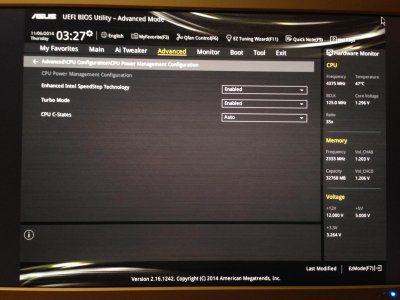- Joined
- May 8, 2013
- Messages
- 48
- Motherboard
- Asus X99-A
- CPU
- Intel Core i7 5820k
- Graphics
- Asus GTX 760
- Mac
- Classic Mac
- Mobile Phone
Haswell-E + X99 Motherboard Temporary Guide - OS X 10.10.0
I'm so extremely impressed what you've achieved so far. It's an amazing community here and I would like to be part of it.
It's an amazing community here and I would like to be part of it.
I do have two questions so far.
For an overclocked 5820k would you suggest the Asus X99-Deluxe or Gigabyte X99-UD4? The UD4 is 160$ cheaper than the Asus in Europe. So I'm tending to the UD4 but I'm worried about the OC possibilities and if it's possible to use a thunderbolt extension card.
Has anyone created a Software RAID with his X99 built? Would it work?
Would it work?
Thanks in advance.
I'm so extremely impressed what you've achieved so far.
I do have two questions so far.
For an overclocked 5820k would you suggest the Asus X99-Deluxe or Gigabyte X99-UD4? The UD4 is 160$ cheaper than the Asus in Europe. So I'm tending to the UD4 but I'm worried about the OC possibilities and if it's possible to use a thunderbolt extension card.
Has anyone created a Software RAID with his X99 built?
Thanks in advance.


